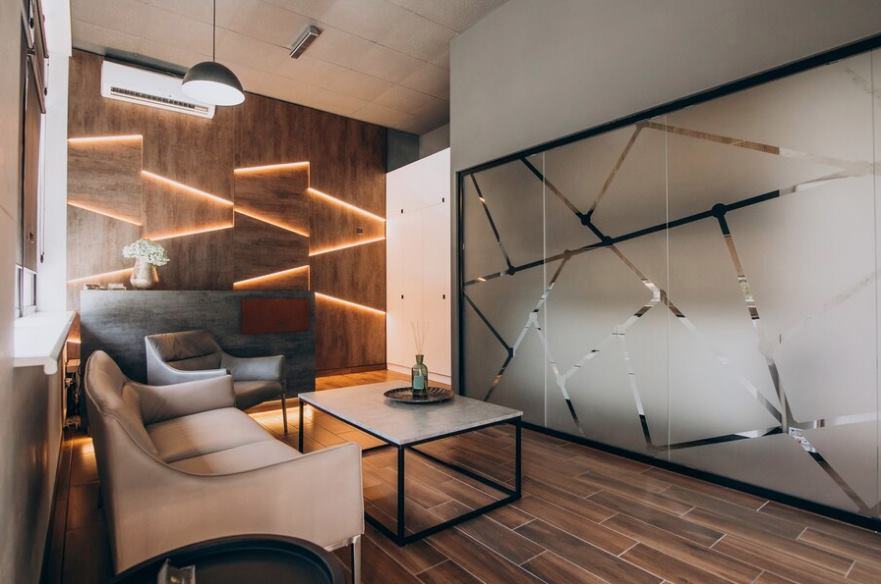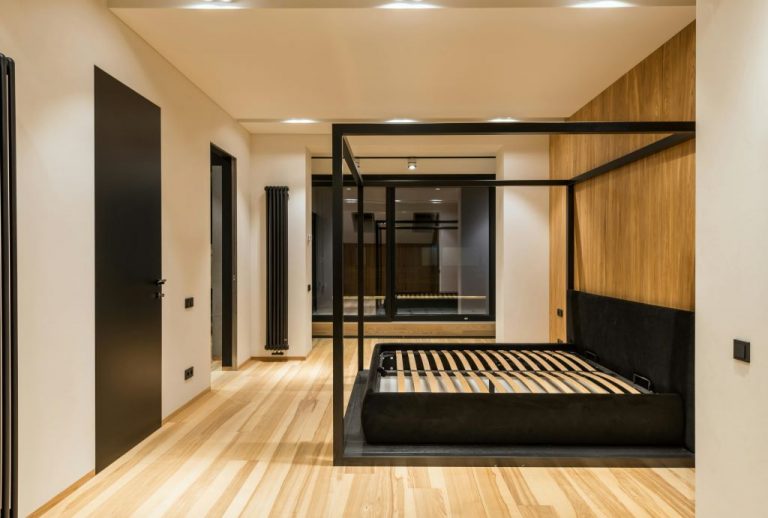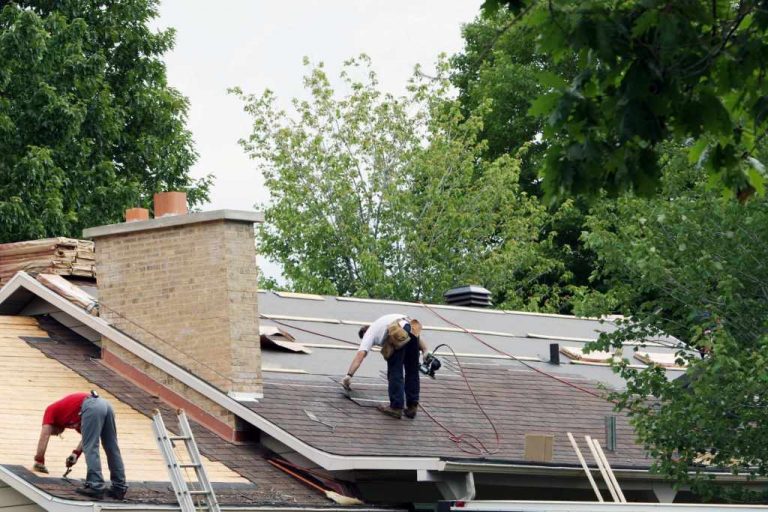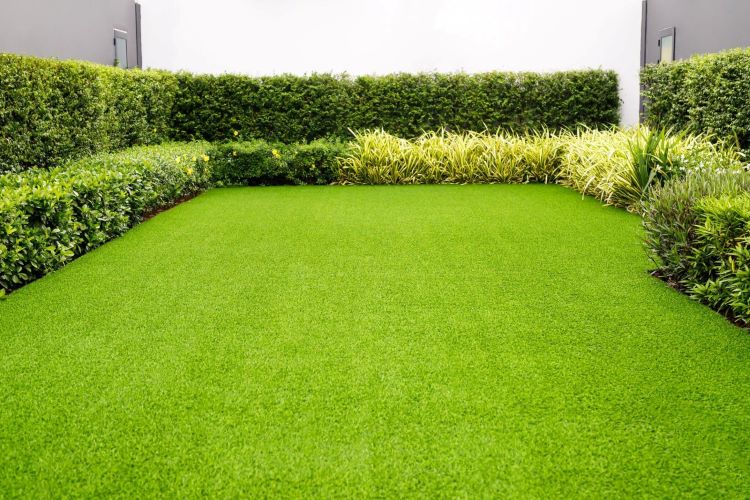When it comes to improving our homes lighting plays a role, in both functionality. Enhancing the overall look of a living space. Among the options, indirect lighting has become a popular choice for its versatility and sophistication.
This unique method of illumination not only serves purposes but also adds an artistic touch to interior design. In this article, we will delve into the enchanting qualities of lights.
How they can seamlessly integrate into home improvement projects to elevate the overall ambiance of our living spaces.
Understanding Indirect Lighting
Indirect lighting also referred to as ambient or mood lighting differs from lighting in that it doesn’t directly shine onto objects or surfaces. Instead, it softly illuminates the space by reflecting light off walls, ceilings, or other surfaces.
This subtle and diffused illumination creates an inviting atmosphere making indirect lighting an option, for those looking to add sophistication to their homes.
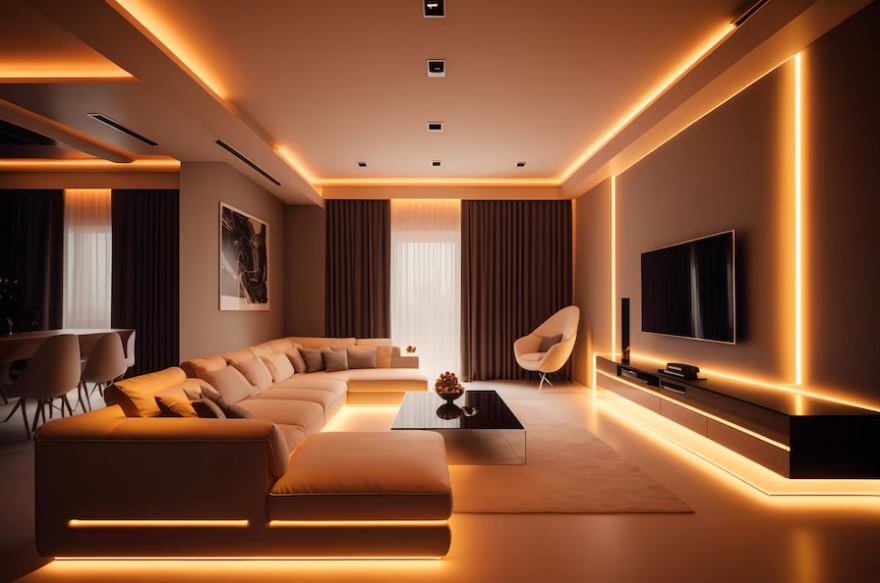
Practical Advantages of Indirect Lighting
Indirect lighting offers several practical advantages in various settings, enhancing both functionality and aesthetics.
Reduced Glare
One significant benefit of using indirect lighting is its ability to eliminate harsh glare. Unlike lighting that can create shadows and strain our eyesight indirect lighting evenly distributes light which reduces glare and creates a comfortable environment.
Enhanced Ambiance
Creating a welcoming and cozy ambiance is greatly enhanced by the use of lighting. The soft glow provided by these lights promotes relaxation. Can instantly transform a room into a retreat perfect, for unwinding after a day.
Highlighting Architectural Features
A clever placement of lights allows homeowners to highlight the architectural features of their living spaces. This not only adds interest but also showcases the craftsmanship behind the design.
Integrating Indirect Lights into Home Improvement Projects
When it comes to incorporating lighting into home improvement projects there are popular techniques to consider.
Cove lighting
Cove lighting involves installing LED strips or fixtures along the edges of walls or in recessed areas creating an upward-facing glow that brings sophistication to any room.
Recessed lighting
Recessed lighting, when positioned strategically to cast light upwards or at an angle produces a pleasing effect that’s ideal, for accentuating specific areas or providing an overall gentle wash of light throughout a space.
Wall washer lights
Wall washer lights are designed specifically to evenly illuminate walls enhancing the perceived size of the area while creating a pleasing backdrop.
These wall washers are commonly found in galleries, hallways, and living rooms.
Under Cabinet Lighting
In kitchens and bathrooms installing, under cabinet lighting serves both aesthetic purposes. It not only improves visibility by casting a glow onto countertops and backsplashes but also adds a touch of sophistication to the space.
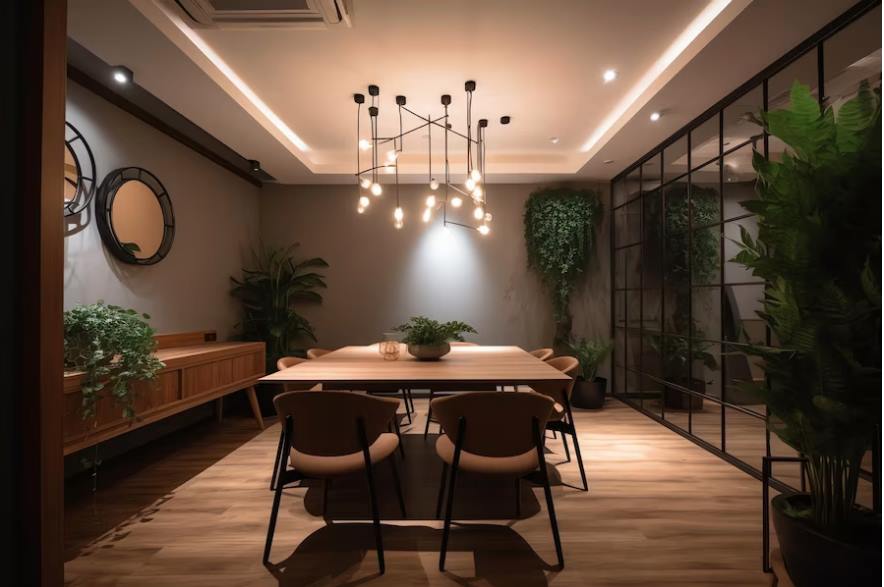
Considering the aesthetics
Aesthetics encompass a sensory journey, weaving beauty into our surroundings. From the graceful arcs of architecture to the vibrant hues of nature, aesthetics ignite emotional resonance.
In art, form melds with function, creating visual symphonies that echo the sublime. Aesthetics are the silent poets, crafting a tapestry of delight on the canvas of life.
Color Temperature
The choice of color temperature plays a role in determining the aesthetic outcome of indirect lighting. Warm white tones (2700K 3000K) create an inviting atmosphere while cooler tones (4000K 5000K) can enhance focus and productivity in areas like home offices.
Dimming Capabilities
By incorporating dimming capabilities homeowners can adjust the intensity of the light according to their mood or the time of day. Dimmable indirect lights offer flexibility allowing users to create atmospheres within the space.
Fixture Selection
The design of fixtures used for lighting is an aspect to consider for aesthetics. Sleek and modern fixtures may complement interiors while more ornate designs can enhance the elegance of classic decor.
Advancements in Indirect Lighting Technology
The evolution of lighting technology has brought about features that further enhance the appeal of indirect lighting.
Smart Lighting Control
With smart home technology advancements, homeowners now have remote control capabilities, for their indirect lighting systems.
Smart lighting offers a deal of personalization by allowing users to customize the color, intensity, and even schedule of their lights to match their preferences.
Color-changing LEDs
Indirect lighting, with color-changing capabilities, adds a creative touch to home lighting. Homeowners can experiment with a range of colors to suit occasions or simply reflect their current moods.
Flexible LED Strips
Flexible LED strips are changing the game when it comes to implementing lighting. These strips can be easily installed in irregular spaces giving homeowners flexibility and room for creative design.
Incorporating lighting into home improvement projects goes beyond providing illumination; it’s about creating a narrative that celebrates craftsmanship and design.
As homeowners embark on the journey of enhancing their living spaces, the thoughtful integration of lights becomes an art form in itself.
Architectural features like molding, arches, or textured walls can be highlighted using lighting to draw attention and accentuate the craftsmanship involved in designing these elements. The interplay between light and shadow adds depth and character to the space.
Creating an Artful Narrative
By directing light towards areas or focal points within a room, such, as artwork, sculptures, or decorative pieces homeowners can elevate the design with an added layer of sophistication.
Indirect lighting offers a way to highlight elements in a space without overwhelming it.
Creating Visual Harmony
Utilizing lighting strategically can bring about a sense of harmony, in open-concept spaces. By using variations in lighting to define zones homeowners can achieve a cohesive and well-balanced aesthetic.
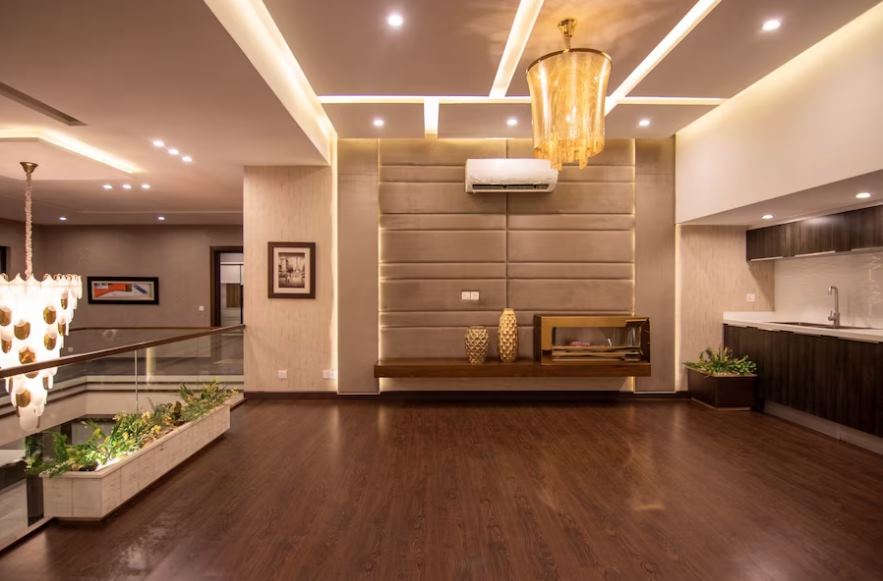
The Role of Professionals in Indirect Lighting Projects
While some homeowners may choose to take on DIY lighting projects seeking advice from lighting professionals can greatly enhance the success of a lighting endeavor.
Lighting designers possess the expertise to evaluate the characteristics of a space and recommend lighting solutions that consider factors such as room size, ceiling height, and existing decor.
Conclusion
In the realm of home improvement, the importance of lighting cannot be emphasized enough. Indirect lighting has emerged as a hallmark of design as it seamlessly combines functionality with aesthetics.
When homeowners aim to create spaces that reflect their personality and style incorporating lights becomes a transformative tool.
By understanding the benefits of mastering integration techniques and appreciating the considerations involved individuals can embark on a journey to illuminate craftsmanship and elevate their home ambiance, to new heights.

